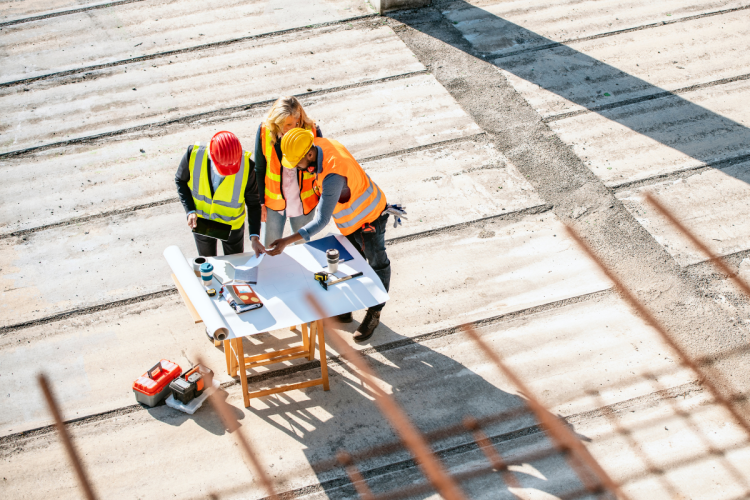Buy Canadian: Federal support of Canadian steel and lumber affects procurement

Earlier this month, the Federal Government announced their intention to implement the Buy Canadian Policy in Canada Strong: Budget 2025. As previously summarized, this upcoming federal policy involves supporting Canadian steel and softwood lumber. Now, details to protect the steel and lumber industries have been announced, impacting projects that incorporate these products.
Steel
To support the steel industry, the Federal Government will make it more difficult for projects to use non-Canadian steel by curbing the tariff rate quota (TRQ). The TRQ sets a limit on how much product an importer can bring to Canada at a lower rate of duty. After the importer meets that threshold, they can continue to import more product at a higher duty rate.
Lowering the TRQ for steel is intended to restrain imported steel. The TRQ for non-free trade agreement partners will fall from 50% to 20%, and the TRQ for non-CUSMA partners with a free-trade agreement will be lowered from 100% to 75%. While the government appears to feel confident that this limitation on steel imports will continue to meet the demands of domestic projects, parties on a project should be on the lookout for a strong supply chain.
Steel derivatives
Next, the Federal Government will implement a global Steel derivatives are manufactured products in which a majority of its value and material is composed of steel. The federal government provided an initial list of steel derivative products that will be subject to this tariff, including fasteners, structures like prefabricated buildings and bridges, steel and iron mesh-like items and more. This tariff is expected to apply to over $10 billion worth of steel derivatives.
As a result of these tariffs, projects that require steel derivatives may be subject to higher costs, leading to a need to secure Canadian suppliers. As these tariffs are levied to the purchaser when the goods arrive to Canada, it ultimately the purchaser in Canada that must find ways to offset the tariff expense.
Additional benefits
To further sharpen the competition for Canadian steel and lumber, the Federal Government is cutting the cost to transport these materials by rail, reducing steel and lumber interprovincial freight rates for Canadian National and Canadian Pacific Kansas City 50% by next spring. This should reduce prices and make it easier for projects to support Canadian products.
Additionally, housing development projects have the opportunity to attain additional benefits from government programs that support the soft lumber industry. To promote more housing projects and the use of Canadian lumber, Build Canada Homes, a new government agency that supports housing projects, will prioritize funding proposals that are:
- Multi-year projects
- Use Canadian lumber
- Ready to break ground within 12 months
Pressure on industry
All these directives to use Canadian products may put undue pressure on the lumber and steel industries. To ensure that steel and lumber businesses can adapt and thrive among these new policies, the federal government will invest $100 million towards supporting industry workers, contribute $500 million to the Business Development Bank of Canada Softwood Lumber Guarantee Program and provides $500 million in funds to the new Large Enterprise Tariff Loan Facility.
Key takeaways
The announced Buy Canadian Policy will apply to federal and Crown projects in order to prioritize Canadian suppliers during the procurement process. Procurers who want to bid on federal projects must know where their steel and lumber are sourced – not just to provide more accurate bid estimates, but also to ensure bids are competitive (or, at the least, considered).
Furthermore, the implementation of Canadian steel and lumber is expected to become an important factor during the procurement process. Contractors should start preparing bidding checklists and procedures to align with the Buy Canadian Policy.
As Canadian fabricators and suppliers become more in demand, there may be challenges in securing a reliable supply of steel and lumber. Contractors and project owners should get ahead of the curve and start securing Canadian supply sources.
The MLT Aikins procurement team is widely recognized across Western Canada for our extensive experience in helping purchasing organizations in both the public and private sector successfully achieve their procurement goals. We’ll continue to monitor any changes in government policies and programs, providing up-to-date insights to help guide organizations through any major shifts.
Note: This article is of a general nature only and is not exhaustive of all possible legal rights or remedies. In addition, laws may change over time and should be interpreted only in the context of particular circumstances such that these materials are not intended to be relied upon or taken as legal advice or opinion. Readers should consult a legal professional for specific advice in any particular situation.







